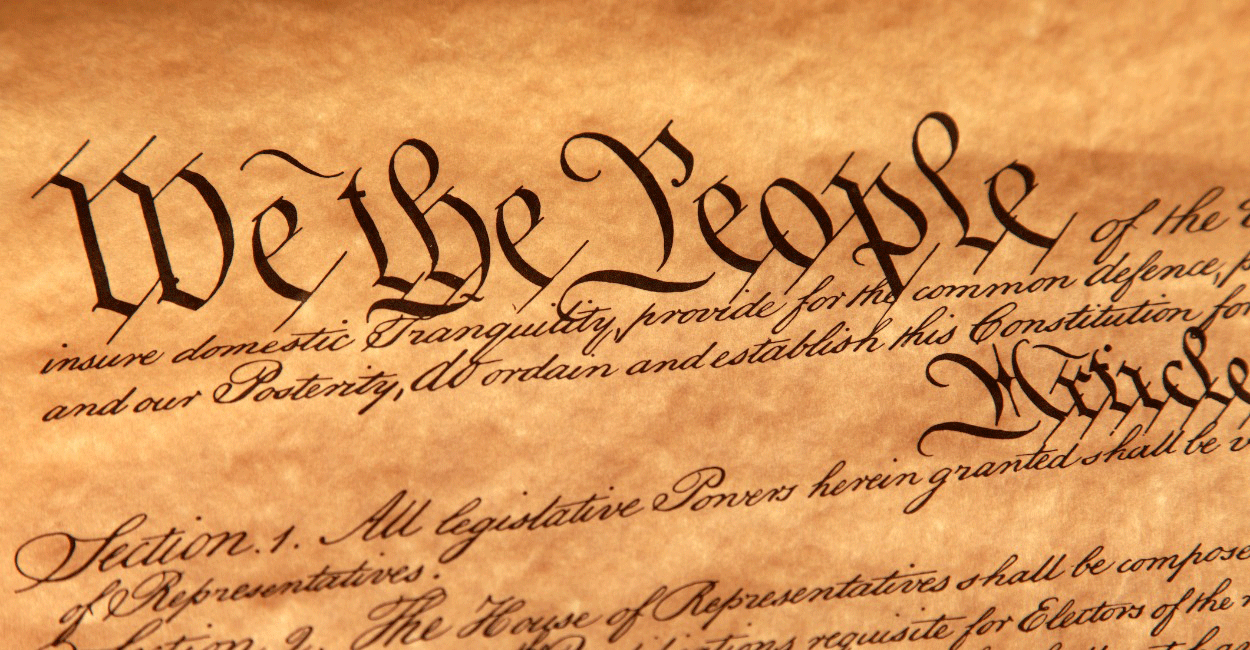On Wednesdays I used to study the Constitution. Most recently, I looked at Article 2 §4 which was about impeachment. That was in December, 2018 and even though I burned out and quit writing Constitution posts, they keep showing up in the top 10 posts in my monthly stats. I’m a little worried that I’m attracting the wrong sort of people – Calling Forth the Militia seems to get more hits than Impeachment. But whatever. I’m educating myself. So, starting now, I’m learning about Article 3 §1, which has nothing to do with waistcoats. Article 3 §1 establishes the judicial branch of federal government.

Article 3 §1
The judicial Power of the United States, shall be vested in one supreme Court, and in such inferior Courts as the Congress may from time to time ordain and establish. The Judges, both of the supreme and inferior Courts, shall hold their Offices during good Behaviour, and shall, at stated Times, receive for their Services, a Compensation, which shall not be diminished during their Continuance in Office.
Meaning
This seems straightforward. The U.S. will have a court system that includes at least a supreme court but can have more. There is no Constitutionally required term of office for any judges as long as they behave (good behavior remaining to be defined elsewhere). And they will be paid for their jobs without having to worry about pay cuts.
But previous experience has taught me that Constitutional clauses don’t always mean exactly what their words mean. So let’s check and see what the Annotated Constitution has to say about it.
Vests and Power
The judicial Power of the United States
There is some legal history dealing with definitions of the term “judicial power” and whether it’s the same as “jurisdiction.” TLDR: they are different, and that affects the meaning of “shall be vested.” In short, it means that Congress doesn’t have to give the courts all the powers that it might give the courts. So courts only have the power expressly granted to them. Seriously, the entire history of the U.S. would be so much smoother if the Framers had followed the Jesuit practice of defining terms before arguing.
For anyone who’s interested, the annotations for the Judicial Vesting clause include summaries of the inherent powers of federal courts (relating to procedural rules; contempt and sanctions; and issuing judgments). They also cover Congressional interference with the judiciary; relations between federal and state courts; and federal noninterference with state jurisdiction. These are all good topics, and I’m curious about Congressional interference. I find it odd that there isn’t anything about what constitutes good behavior for judges. I guess that’s just me – defining good behavior doesn’t seem to have ever become an issue, although enforcing it eventually defaulted to the impeachment process.
Since I’m easing back into this Constitutional scholarship thing, I’m going to skip over these discussions and only look at things tied to understanding the actual words of the Constitution.
One Supreme Court
vested in one supreme Court
Almost everything about the Supreme Court was left up to Congress to decide after the Constitution was ratified. They did that in the Judiciary Act of 1789, which established a Chief Justice plus five Associates. The number of judges bounced around in the nineteenth century until the it finally settled at nine around the time of Andrew Jackson’s presidency.
Establishing Courts
and in such inferior Courts as the Congress may … establish
Unsurprisingly, that level of vague led to a lot of wrangling downstream. The big question was whether there would be a hierarchy of federal courts or a federal supreme court exercising appellate jurisdiction over state courts. I had to look up appellate, so:
(especially of a court) concerned with or dealing with applications for decisions to be reversed.
dictionary.com
The Judiciary Act of 1789 created thirteen district courts with four annual sessions and three circuit courts. This system was a pain in the ass, but it stuck around until 1891 when the current federal judicial system was established: district courts with original jurisdiction, intermediate appellate courts, and the Supreme Court.
(There is also an interesting question: if judges are for life, what do you do with displaced judges when courts are abolished?)
Special Courts
The Mann-Elkins Act of 1910 established a Commerce Court to enforce orders of the Interstate Commerce Commission, but it only lasted until 1913. The Emergency Court of Appeals organized by the Emergency Price Control Act of January 30, 1942 was to hear appeals filed within thirty days against denials of protests by the Price Administrator.
Congress established more lasting special courts, too. The Court of Appeals for the Federal Circuit, established in 1982, is like the geographic circuits. The Court of International Trade has been around under different names since 1926. The Judicial Panel on Multidistrict Litigation transfers actions pending in different districts to a single district for trial. There are others, but you get the idea.
Legislative Courts
We’re sliding into wonky territory here, but I’ll see what I can do. The distinction between constitutional courts (aka Article Three Courts) and legislative courts was first made in American Ins. Co. v. Canter, which involved a court in Florida that limited judges to a four-year term. I won’t dig into the arguments. But I think basically, Article Three courts are federal courts where judges are appointed for life. Legislative courts are territorial courts, where judges may have limited terms and pay cuts, and where the distinction between “judicial power” and “jurisdiction” matters. But I’m pushing 1000 words already, so I’m not going to dig any deeper. If you want to go deeper, you might want to check out Murray’s Lessee v. Hoboken Land & Improvement Co. which apparently helps delineate the differences. If you do, come back and tell me what you found out in the comments.




About the author